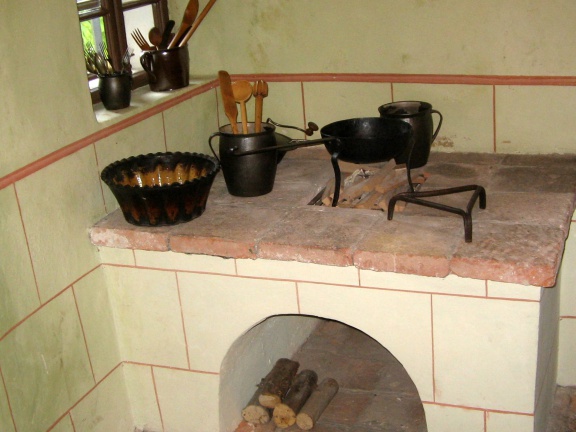Difference between revisions of "Miner's House - Ethnological Collection"
Ivan Pirnat (talk | contribs) m |
Ivan Pirnat (talk | contribs) m |
||
| Line 1: | Line 1: | ||
{{Article | {{Article | ||
| − | | status = INFOBOX TOPROOFREAD NIFERTIK! | + | | status = WORKING INFOBOX TOPROOFREAD NIFERTIK! |
| maintainer = Ivan Pirnat | | maintainer = Ivan Pirnat | ||
}} | }} | ||
| Line 20: | Line 20: | ||
}} | }} | ||
| + | The miner's house standing at Bazoviška 4 in Idrija was built at the end of the 18th century. To this day, the house has preserved the main features of typical Idrija architecture and miner's living culture of the past. After undergoing extensive renovation in the 1990's, the house is today protected as a cultural monument. The ground floor is furnished and takes visitors back to the first half of the 20th century. | ||
| + | The Idrija miner's house is nestled on a slope with its front facing the valley. The entire structure is built almost entirely of wood, except for the stone foundations, stone cellar, interior kitchens, and vestibules. The upper parts of the external walls are made of wooden boards lined with laths, plastered and whitewashed. The roof is covered with fir boards referred to by the locals as »šinklni«. Owing to its height, white facade and many small windows, it gives the impression of an immense, if not monumental building. Most miners could not afford to have their own house with a vegetable garden, but were usually tenants in private homes and, after 1870, resided in apartment blocks called »prhauzi«. | ||
| + | |||
| + | In the 19th century, some 16 persons lived in a single house. Each owner rented out at least one apartment. The landlord had a better social status than the tenant, since he reared domestic animals (a pig, rabbits, chickens and occasionally even a cow) and collected rent. The lack of space forced families to live modestly. Quite a lot of imagination was needed to create sufficient sleeping space. The youngest child usually slept in a crib, two children in a drawer – »ladlc«, and the rest of the children on a wooden bench with a backrest – »kanape«, or in a straw bed, while in summer young boys often slept in the attic. | ||
| + | |||
| + | Even songbirds found their place in the house. Their cages hung from ceilings or stood on wardrobes or windowsills. The miners were always sociable and liked to gather in the evenings to talk, play social games, and carry out various jobs, while women and children made bobbin lace. | ||
== See also == | == See also == | ||
* [[Idrija Municipal Museum]] | * [[Idrija Municipal Museum]] | ||
Revision as of 14:35, 27 December 2009
The miner's house standing at Bazoviška 4 in Idrija was built at the end of the 18th century. To this day, the house has preserved the main features of typical Idrija architecture and miner's living culture of the past. After undergoing extensive renovation in the 1990's, the house is today protected as a cultural monument. The ground floor is furnished and takes visitors back to the first half of the 20th century.
The Idrija miner's house is nestled on a slope with its front facing the valley. The entire structure is built almost entirely of wood, except for the stone foundations, stone cellar, interior kitchens, and vestibules. The upper parts of the external walls are made of wooden boards lined with laths, plastered and whitewashed. The roof is covered with fir boards referred to by the locals as »šinklni«. Owing to its height, white facade and many small windows, it gives the impression of an immense, if not monumental building. Most miners could not afford to have their own house with a vegetable garden, but were usually tenants in private homes and, after 1870, resided in apartment blocks called »prhauzi«.
In the 19th century, some 16 persons lived in a single house. Each owner rented out at least one apartment. The landlord had a better social status than the tenant, since he reared domestic animals (a pig, rabbits, chickens and occasionally even a cow) and collected rent. The lack of space forced families to live modestly. Quite a lot of imagination was needed to create sufficient sleeping space. The youngest child usually slept in a crib, two children in a drawer – »ladlc«, and the rest of the children on a wooden bench with a backrest – »kanape«, or in a straw bed, while in summer young boys often slept in the attic.
Even songbirds found their place in the house. Their cages hung from ceilings or stood on wardrobes or windowsills. The miners were always sociable and liked to gather in the evenings to talk, play social games, and carry out various jobs, while women and children made bobbin lace.



